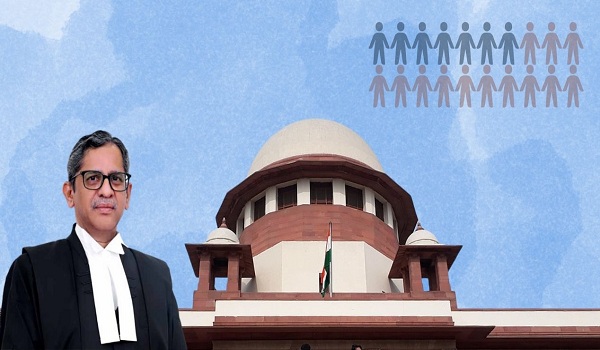The Indian government has set up a high-level committee, led by the Cabinet Secretary, to address the issue of dominant Scheduled Caste (SC) communities receiving more benefits than the most backward ones.This development comes particularly in response to the Madiga community’s demands in Telangana.
Mandate of the Newly Formed Committee
- The committee’s primary objective is to explore alternative methods for addressing grievances faced by various SC communities across the country.
- While initiated in response to the Madiga community’s concerns, the committee’s scope extends beyond one community or state.
- It aims to evaluate and work out a method for the equitable distribution of benefits, schemes and initiatives to the most backward communities amongst the over 1,200 Scheduled Castes across the country, that have been crowded out by relatively forward and dominant ones.
Major Aspects Related to Subcategorisation of SC in India
- Subcategorisation refers to the division or classification of a larger category into smaller, more specific subcategories based on certain criteria or characteristics.
- In the context of SC in India, subcategorisation may involve further classification within the SC group based on factors such as socioeconomic status or historical disadvantages.
- Madiga Community’s Struggle: The Madiga community, constituting 50% of SCs in Telangana, has faced challenges in accessing government benefits intended for SCs due to dominance by the Mala community.
- Despite their substantial population, the Madiga community argued that it has been excluded from SC-related initiatives.
- They have been struggling since 1994 for the sub-categorisation of SCs and it was this demand that first led to the formation of the Justice P. Ramachandra Raju Commission in 1996 and later a National Commission in 2007.
- Similar Issue Across States: SC communities in various states have reported similar challenges, leading to the formation of commissions by both State and Union governments.
- States like Punjab, Bihar, and Tamil Nadu attempted sub-categorisation at the state level, but these efforts are currently tied up in legal battles.
Constitutional Stance
- Articles 341 and 342: It grants powers to the President to notify SC and ST lists and to Parliament to create these lists.
- However, there is no explicit prohibition against sub-categorisation.
- Previous Standpoint of Union Government: The Union government had in 2005 considered legal options for sub-categorisation of SCs.
- At the time, the erstwhile Attorney General of India had opined that this could be possible but only if there was “unimpeachable evidence to indicate a necessity”.
- Also, both the National Commissions for Scheduled Castes and Scheduled Tribes opposed amending the Constitution at that time.
- They argued that creating a sub-quota within the existing quota is not enough, emphasising the immediate need to prioritise the allocation of existing schemes and benefits to these communities.
Legal Tussle over the Subcategorisation of SC
- 1975: The Punjab government issues a notification dividing its 25% SC reservation into two categories. It was one of the first instances of existing reservations being ‘sub-classified’ by a state.
- While the notification remained in force for nearly 30 years, it ran into legal hurdles in 2004.
- 2004: Supreme Court strikes down Andhra Pradesh Scheduled Castes (Rationalisation of Reservations) Act, 2000, citing violation of the right to equality in the E.V. Chinnaiah v State of Andhra Pradesh case.
- Emphasises that the SC list should be treated as a single, homogeneous group.
- The President has the power to create the SC list (Article 341), and states cannot interfere or disturb it, including through sub-classification.
- Later, the Punjab & Haryana High Court, in Dr. Kishan Pal v. State of Punjab, struck down the 1975 notification, supporting the E.V. Chinnaiah decision.
- 2006: The Punjab government attempts to reintroduce sub-categorisation through the Punjab Scheduled Caste and Backward Classes (Reservation in Services) Act, 2006, but it was struck down in 2010.
- 2014: Supreme Court refers the matter to a five-judge constitution bench, questioning the correctness of the 2004 E.V. Chinnaiah decision.
- 2020: The Constitution bench holds that the 2004 decision needs reconsideration, rejecting the idea of SCs being a homogeneous group and acknowledging the existence of “unequal” within the list.
- The concept of the “creamy layer” was also recommended by the Supreme Court for SC and ST.
- Present: A larger seven-judge bench is hearing the issue as only its judgment can prevail over the decision of a smaller bench.
- Sub-classification will impact various communities across states, including Balmikis and Mazhabi Sikhs in Punjab, Madiga in Andhra Pradesh, Paswans in Bihar, Jatavs in UP, and Arundhatiyars in TamilNadu.

